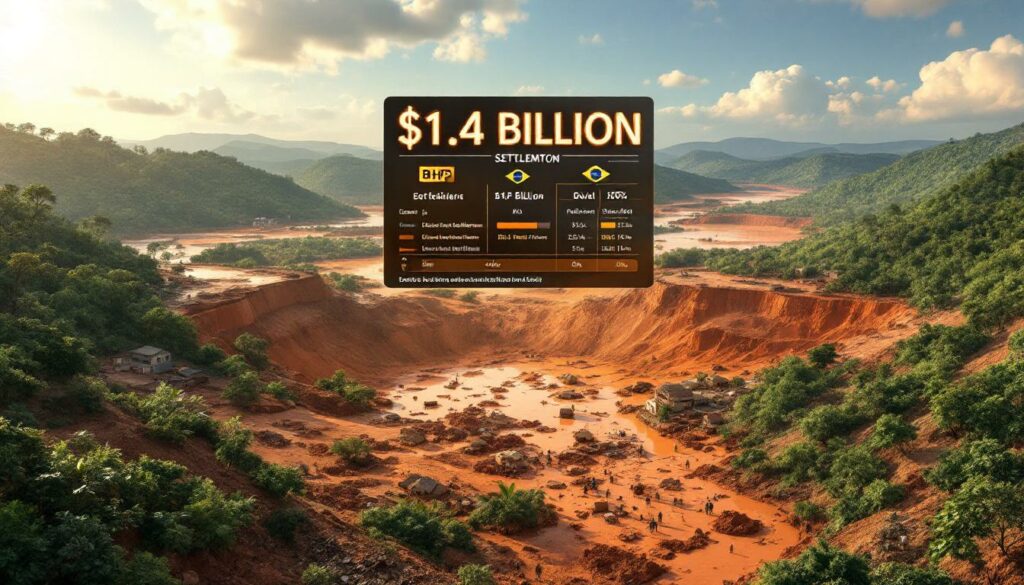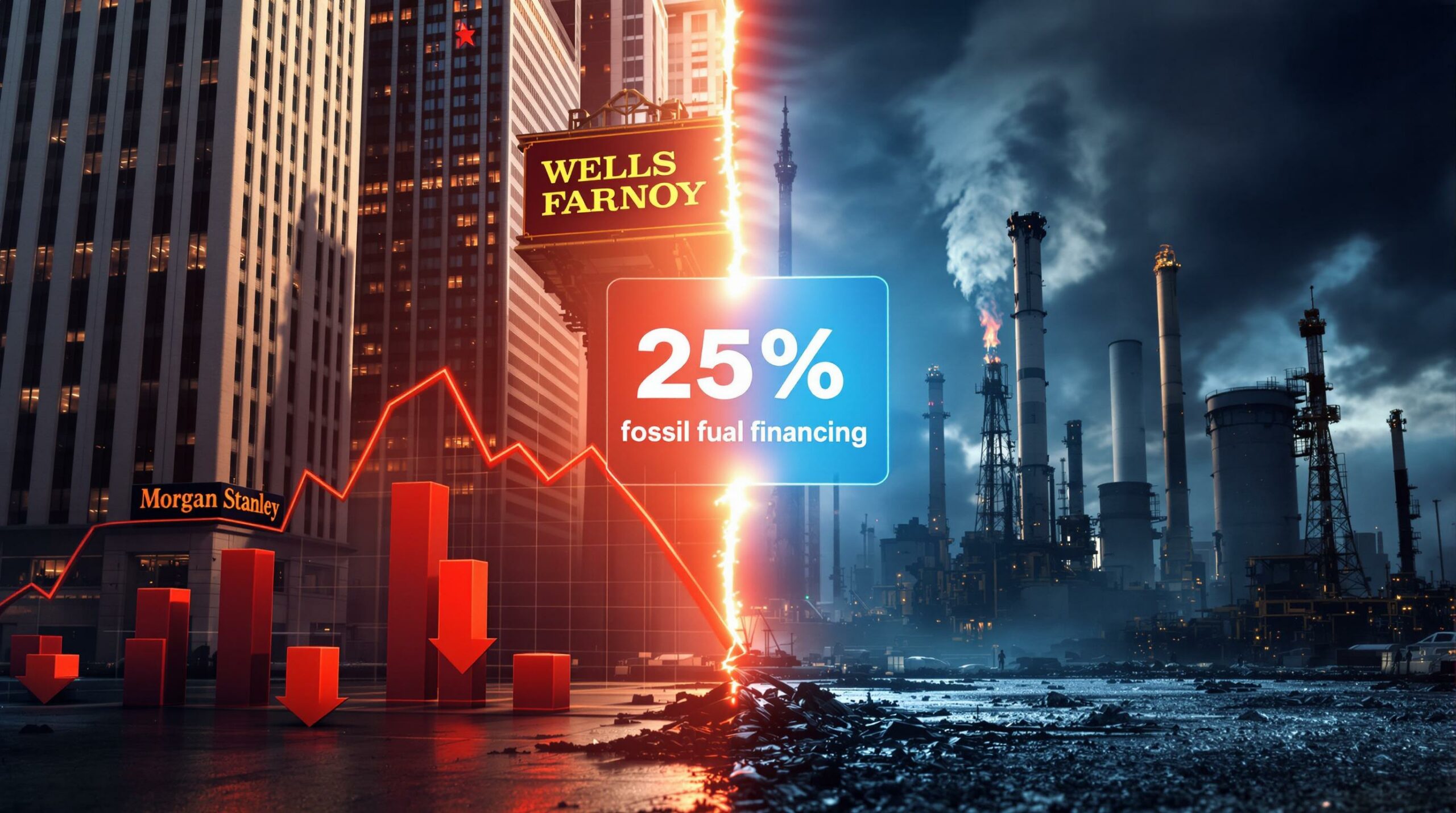BHP and Vale's $1.4 Billion Settlement Offer: Understanding the Mariana Dam Disaster Legal Battle
In a significant development, mining giants BHP and Vale have proposed a $1.4 billion settlement to resolve a UK lawsuit stemming from Brazil's catastrophic Mariana dam collapse. This settlement, one of the largest environmental disaster settlements in mining history, represents a pivotal moment in the ongoing legal battle that has spanned multiple jurisdictions since the 2015 disaster.
What is the Mariana Dam Disaster and Why is it Significant?
The Mariana dam disaster stands as one of Brazil's worst environmental catastrophes, with impacts that continue to reverberate through affected communities and ecosystems. When the Fundão tailings dam collapsed on November 5, 2015, it unleashed approximately 43 million cubic meters of mining waste into the Doce River basin, devastating everything in its path.
The mudflow traveled over 650 kilometers through the river system, eventually reaching the Atlantic Ocean. This toxic deluge destroyed the village of Bento Rodrigues, damaged numerous other communities, and contaminated water supplies for hundreds of thousands of people. The environmental impact was equally severe, with extensive damage to aquatic ecosystems and riverine habitats.
The Catastrophic Failure and Its Aftermath
The disaster's immediate consequences were devastating: 19 people lost their lives, hundreds were displaced from their homes, and thousands of fishermen and farmers lost their livelihoods. The environmental damage extended throughout the Doce River basin, with toxic mud containing heavy metals like arsenic, mercury, and lead contaminating water supplies and agricultural lands.
Beyond the immediate humanitarian crisis, the disaster triggered a complex web of legal proceedings across multiple jurisdictions. Brazilian authorities filed criminal charges against executives and civil suits against the companies, while affected individuals and communities sought compensation through various legal channels.
The Joint Venture Structure and Responsibility
At the center of this disaster was Samarco Mineração S.A., a 50-50 joint venture between mining giants BHP Group and Vale. This partnership structure has complicated legal proceedings significantly, as both parent companies have faced scrutiny regarding their oversight responsibilities.
The Fundão dam was part of the Germano mining complex in Minas Gerais state, where iron ore was processed before being transported via pipeline to export facilities. This operational structure has raised critical questions about corporate governance, risk management, and the delegation of safety responsibilities in joint ventures.
How Much is the UK Settlement Offer and What Does it Cover?
The recently proposed settlement represents a significant financial commitment by BHP and Vale to resolve litigation outside their home jurisdictions, though it falls well short of the maximum potential damages estimated by claimants.
Breaking Down the $1.4 Billion Proposal
The $1.4 billion settlement offer was disclosed during a meeting in New York in June between the companies, claimants' law firm Pogust Goodhead, and US hedge fund Gramercy, which is financially backing the legal action. This settlement would specifically address claims brought in the UK High Court, separate from proceedings in Brazil.
What makes this case particularly notable is the gap between the proposed settlement and the potential liability. Claimants' lawyers have estimated potential damages as high as £36 billion ($48.2 billion) if the case were to proceed to trial and result in a judgment against the companies.
This disparity highlights the strategic calculations both sides must make—weighing the certainty of a settlement against the uncertainties of continued litigation, including the possibility of appeals that could extend the legal process for years.
Allocation of Settlement Funds
According to the details disclosed, the $1.4 billion settlement proposal would allocate:
- Approximately $800 million for direct victim compensation
- Around $600 million to cover legal expenses related to the High Court proceedings
This distribution reveals the enormous legal costs associated with complex, multi-jurisdictional litigation. The substantial portion allocated to legal expenses (about 43% of the total) illustrates how expensive these cases can become for all parties involved.
The compensation structure raises important questions about how funds would be distributed among thousands of claimants with varying degrees of harm, from loss of life and property to long-term health impacts and loss of livelihood.
Who Are the Key Parties in the Legal Proceedings?
The UK lawsuit has brought together an unusual constellation of parties, reflecting the increasingly global nature of environmental justice litigation.
The Claimants and Their Legal Representation
The UK lawsuit represents approximately 700,000 Brazilian claimants, including indigenous communities, municipalities, religious organizations, and individuals affected by the disaster. This massive class action brings together diverse parties seeking justice through a foreign legal system.
Pogust Goodhead, a law firm specializing in mass tort litigation, represents these claimants. The firm has built its reputation on handling complex, cross-border cases involving environmental damage and corporate responsibility. Their decision to pursue the case in the UK rather than solely in Brazil reflects a strategic choice to access a legal system with different procedural rules and potentially different approaches to corporate liability.
The Financial Backers Behind the Litigation
US hedge fund Gramercy has emerged as the primary financial backer of the claimants' case. This litigation funding arrangement highlights a growing trend in complex international disputes, where specialized investors provide the substantial financial resources needed to sustain lengthy legal battles against well-resourced corporate defendants.
Litigation funding typically involves the funder receiving a percentage of any eventual settlement or judgment, which can range from 20% to 40% depending on the case complexity and duration. This model enables claimants without significant financial resources to pursue claims that might otherwise be impossible due to the enormous costs involved.
What Has Been BHP's Response to the Allegations?
BHP has maintained a consistent defensive position throughout the legal proceedings, while simultaneously participating in remediation efforts in Brazil.
Denial of Safety Negligence Claims
In October 2024, BHP firmly rejected allegations that it prioritized profit over safety, characterizing such claims as "far-fetched and unjustified." The company has consistently maintained that Samarco operated with relative independence from its parent companies and that appropriate oversight was in place.
BHP has argued that the disaster resulted from a complex set of technical factors rather than corporate negligence. This stance aligns with the company's broader strategy of acknowledging the tragedy while disputing direct liability for the dam's failure.
Corporate Governance and Risk Management Implications
The case has forced mining companies globally to reconsider their approach to tailings dam management and joint venture oversight. Following the disaster, both BHP and Vale implemented more rigorous dam safety reviews across their global operations and revised their risk assessment protocols.
The industry evolution trends has responded with the Global Industry Standard on Tailings Management, developed through a multi-stakeholder process involving the International Council on Mining and Metals (ICMM), the United Nations Environment Programme (UNEP), and the Principles for Responsible Investment (PRI).
These changes reflect a growing recognition that environmental disasters carry enormous financial, legal, and reputational costs that far exceed the investments required for proper safety measures and governance structures.
How Does This Case Compare to Other Mining Disaster Settlements?
The proposed $1.4 billion settlement would rank among the largest environmental disaster settlements in mining history, though the context differs significantly from other major cases.
Historical Context of Mining Disaster Compensation
While substantial, the proposed settlement falls well below the largest environmental settlements in history, such as BP's $20.8 billion settlement for the Deepwater Horizon oil spill. However, it exceeds many previous mining-specific settlements, including BHP's earlier $1.7 billion commitment regarding environmental damage from the Ok Tedi mine in Papua New Guinea.
The case is notable for its multi-jurisdictional nature, with parallel proceedings in Brazil and the UK. This reflects a growing trend of holding mining companies accountable in their home jurisdictions for disasters occurring in their overseas operations.
Major Mining Disaster Settlements in Context
| Disaster | Year | Companies Involved | Settlement Amount | Key Notes |
|---|---|---|---|---|
| Mariana Dam (Proposed) | 2015 | BHP & Vale | $1.4 billion | UK lawsuit only; separate from Brazilian proceedings |
| Ok Tedi Mine | 1996-2013 | BHP | $1.7 billion | Environmental damage in Papua New Guinea |
| Deepwater Horizon | 2010 | BP | $20.8 billion | Oil spill with extensive environmental damage |
| Gold King Mine | 2015 | EPA | $220 million | Yellow wastewater spill in Colorado |
| Buffalo Creek | 1972 | Pittston Coal | $13.5 million | Coal waste dam failure in West Virginia |
What distinguishes the Mariana case is the combination of its scale, the involvement of multiple jurisdictions, and the precedent it may set for future mining disaster litigation globally.
What Are the Broader Implications for Mining Companies?
The Mariana case represents a watershed moment for the mining industry, with implications that extend far beyond the specific companies involved.
Setting Precedents for Cross-Border Accountability
This case exemplifies how mining companies increasingly face legal action in their home jurisdictions for disasters occurring in their overseas operations. The UK proceedings against BHP, based on its London listing, demonstrate that corporate structures and international operations no longer insulate companies from liability in their home countries.
This trend creates new risk considerations for multinational mining corporations, potentially affecting how they structure international operations, manage subsidiaries, and establish oversight mechanisms for joint ventures. Companies must now consider liability exposure across multiple jurisdictions when evaluating project risks.
Impact on ESG Policies and Practices
The Mariana disaster has accelerated the mining industry's focus on Environmental, Social, and Governance (ESG) considerations. Companies now face intensified scrutiny from investors, insurers, regulators, and communities regarding their safety records and environmental management practices.
In response, major mining companies have:
- Implemented more rigorous dam safety assessment protocols
- Increased transparency in reporting environmental risks
- Enhanced community engagement practices
- Revised executive compensation structures to incorporate safety and environmental performance metrics
- Adopted more conservative tailings dam designs, often moving away from upstream construction methods
These changes reflect a fundamental shift in how mining companies approach risk management, with greater emphasis on avoiding catastrophic failures even if that means higher operational costs or reduced production.
What Other Business Developments Are BHP and Vale Pursuing?
Despite the ongoing litigation, both BHP and Vale continue to pursue strategic business initiatives to ensure their long-term growth and profitability.
BHP's Investment Strategy in Argentina
BHP, alongside Lundin, is preparing to leverage Argentina's new Large Investment Incentive Regime (RIGI) for their Vicuña copper project. This regime, launched in October, aims to stimulate the mining sector with tax incentives for investments exceeding $200 million until July 2026.
This strategic move demonstrates how mining companies balance managing legacy issues while pursuing new opportunities. The Vicuña project represents a significant copper development at a time when the industry faces growing demand for the metal due to the global energy transition and electrification trends.
Vale's Production Performance
Vale reported a 4% year-on-year increase in iron ore production to 83.6 million tonnes in Q2 2025, while pellet production decreased by 12% to 7.9 million tonnes. These production figures reflect the company's operational focus amid ongoing legal challenges.
Vale's production strategy illustrates how major mining companies must simultaneously manage legal liabilities from past incidents while maintaining their core business operations to satisfy shareholder expectations and market demands.
What Lessons Can the Mining Industry Learn from This Case?
The Mariana disaster has fundamentally transformed how the mining industry approaches tailings management and environmental risk.
Evolving Standards for Tailings Dam Management
The disaster has prompted a comprehensive reevaluation of tailings storage facility design, construction, and monitoring practices. Key developments include:
- The Global Industry Standard on Tailings Management, establishing clearer requirements for facilities throughout their lifecycle
- Increased use of independent technical review boards for dam design and monitoring
- Greater transparency through initiatives like the Investor Mining and Tailings Safety Initiative, which has created a global database of tailings facilities
- Acceleration of research into alternative tailings management technologies, including dry stacking and paste tailings
- More conservative approaches to dam design factors of safety and monitoring trigger levels
These changes represent a significant shift from previous industry practices, with much greater emphasis on preventing catastrophic failures through conservative design, rigorous oversight, and transparent reporting.
The Financial Implications of Environmental Disasters
The Mariana case has revealed the true cost of environmental disasters extends far beyond immediate cleanup expenses. Companies must now consider:
- Multi-jurisdictional litigation expenses, potentially running into billions
- Compensation to affected communities over decades
- Reputational damage affecting investor confidence and social license to operate
- Increased insurance premiums, with some coverages becoming difficult or impossible to obtain
- Stricter regulatory compliance costs as governments respond with enhanced requirements
- Operational constraints as stakeholders demand more conservative approaches to environmental risks
These financial implications have fundamentally altered risk-reward calculations for mining projects, particularly those involving tailings dams in environmentally or socially sensitive areas.
FAQs About the BHP and Vale offer $1.4bn to settle UK lawsuit
What factors will determine whether the settlement offer is accepted?
The claimants' decision will likely depend on several key considerations:
- Assessment of litigation risks and the probability of securing a larger judgment
- The time value of compensation, as continued litigation could delay payments for years
- The distribution mechanism for funds among the approximately 700,000 claimants
- The certainty of payment versus the uncertainty of continued litigation
- The court's evaluation of whether the settlement is fair and reasonable to all class members
Legal experts note that mass tort settlements typically involve difficult trade-offs between obtaining timely compensation and pursuing maximum potential damages.
How does this settlement offer compare to previous compensation efforts?
This UK settlement offer exists alongside separate compensation programs in Brazil, including the Renova Foundation established by the companies in 2016. The foundation has reportedly spent over $5 billion on remediation and compensation efforts, though critics have questioned its effectiveness and independence.
The multiple compensation streams reflect the complex, multi-jurisdictional nature of disaster response, with different legal systems addressing various aspects of accountability and remediation.
What might happen if the settlement offer is rejected?
If rejected, the litigation would likely continue toward trial, potentially extending for several more years. This scenario presents significant risks for both sides:
- For claimants: The possibility of receiving no compensation if the court rules against them, plus years of additional delay
- For defendants: The risk of a much larger judgment, continued legal costs, and prolonged reputational damage
- For both: The uncertainty of appeals that could extend the process by additional years
These considerations typically motivate both sides to seek settlement, even when the amounts differ substantially from initial claims.
How might this settlement affect future mining projects?
Mining companies are already experiencing the ripple effects of the Mariana disaster on new project development:
- Financing costs have increased, particularly for projects involving tailings dams
- Permitting processes have become more stringent in many jurisdictions
- Insurance premiums for environmental liability coverage have risen substantially
- Community opposition to certain types of mining projects has intensified
- Companies increasingly incorporate more conservative design approaches and safety factors, often increasing capital costs
These changes represent a fundamental shift in the industry's approach to risk management and project development, with greater emphasis on preventing catastrophic failures even at the cost of higher operational expenses or reduced production.
Further Exploration
The Mariana dam disaster and its legal aftermath offer important lessons about corporate accountability, environmental protection, and the evolving standards for responsible mining operations. As the industry continues to adapt to these new realities, the outcome of this mineral class action lawsuit will likely influence approaches to environmental risk management and disaster response for decades to come.
The incident has also accelerated investment in waste management solutions and mine reclamation innovations as companies seek to minimize environmental risks. Furthermore, the sustainability transformation in the mining sector has gained momentum, with companies increasingly recognizing that environmental responsibility is not just an ethical imperative but also a business necessity in the face of growing legal and financial risks associated with environmental disasters.
Looking for Early Alerts on Major Mineral Discoveries?
Discovery Alert's proprietary Discovery IQ model instantly notifies investors about significant ASX mineral discoveries, turning complex data into actionable insights that give you a market-leading advantage. Explore historic discoveries and their exceptional returns by visiting Discovery Alert's discoveries page and begin your 30-day free trial today.




